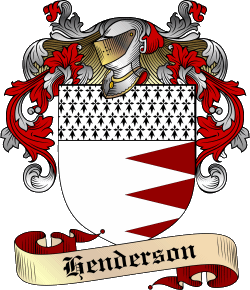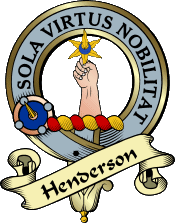|
|
Search

|
  Home Home
|
  Surname Surname
|
  First Name First Name
|
Popular Products

|
  Coat of Arms Coat of Arms
|
  Clan Badges Clan Badges
|
  Books & Gifts Books & Gifts
|
  Celtic Jewelry Celtic Jewelry
|
  Black Shirts Black Shirts
|
  CD Music CD Music
|
  Download Download
|
 Design Gallery
Design Gallery

|
  Irish Irish
|
  Flags Flags
|
  Celtic Celtic
|
  Tartans Tartans
|
  Scottish Scottish
|
  Claddagh Claddagh
|
  Surnames Surnames
|
  Highlander Highlander
|
  Celtic Radio Celtic Radio
|
Research

|
  History History
|
  Country Country
|
  Families Families
|
|
|
|
|
 We custom design and produce all of our products with industrial press technologies located at our Boston Massachusetts facilities! This industrial process results in superior manufacturing that will outlast even store bought products. Our base products are supplied from a major clothing wholesaler, so we can keep our prices low.
Orders made today are generally filled within 1-4 weeks depending on our current supply schedule. All products have a 30 day money back guarantee for defects in workmanship. Customer satisfaction is our number one priority!
|
|
Our Heraldry Database has thousands of Family histories to search. Visit Now!
MacLaine

Coat of Arms
The Maclaines of Lochbuie formed an important part of the clan structure of the Hebrides. They are descended from Gillean of the Battleaxe, a fierce warrior who lived in the mid thirteenth century and held lands in Mull and Morvern. Gillean and his three sons fought valiantly at the Battle of Largs, and they were well received by Alexander II. He was succeeded by Gille-Iosa, whose son, Malcolm, fo.....
|
|
|
Heraldry Database: Henderson
Henderson

|
|


Surname: Henderson
Branch: Henderson
Origins: Scottish
More Info: Scotland
|
|
Background: Patronymic name meaning "son of Henry." The given name "Henry" means "home ruler."
Our ancestors in Glencoe are as old a family as any clan in the Highlands. Through them we claim descent from Eanruig Mor Mac Righ Neachtan -- Big Henry, son of King Nectan (King of Picts in 710) -- who settled the southern shore of Loch Leven. Although it would be difficult to pinpoint when the MacEanruig Chiefs first held the land embracing Glencoe, they held the Chiefship there for three centuries before King Robert the Bruce granted lordship of Glencoe to Angus of the Isles for his support at Bannockburn in 1314.
The last Henderson Chief at Glencoe was Dugald MacEanruig. The chiefship passed as a result of his daughter's marriage into Clan Donald. Iain, Her son and progenitor to the MacIans, established the MacEanruigs as the hereditary pipers for the MacDonalds of Glencoe. At the time of the Massacre, our Gaelic-speaking ancestors were the bodyguard to the Chief of Glencoe.
|
 Motto: Motto: Sola virtus nobilitat, Virtue alone ennobles. Arms: Parted per pale dancettee Or and Sable, on a chief Argent a crescent Azure between two Ermine spots. Crest: A cubit arm Proper the hand holding an estoile Or surmounted by a crescent Azure. Supporters: Azure, a St. Andrew's Cross Argent in the hoist and of two tracts Or and Sable, upon which is depicted the Crest three times along with the Motto 'Sola virtus nobilitat' in letters Argent upon two transverse bands Azure. Plant: Stem of Cotton grass. View the Heraldry Dictionary for help.

There are three origins of this name from opposite ends of the kingdom. The Hendersons in the Borders seem simply to be the ‘sons of Henry’, and the name is often found in the variant of Henryson. They were not a significant power in the Borders, although they were still classed as a riding clan. William Henderson was chamberlain of Lochmaben Castle around 1374. He received from the king of England a pension when he was driven from his lands in the lordship of Lochmaben, and is believed to have died around 1395. From Dumfriesshire the family spread across into Liddesdale, but they do not appear in the list of border clans named by Parliament in 1594 in its attempts to suppress the border reivers.
From the Dumfriesshire family descended James Henderson, who became Lord Advocate around 1494 and was later appointed to the Bench. He acquired the lands of Fordell in Fife and there erected a fine fortified mansion. Fordell was to become the designation of the Lowland chiefs, and it is from this family that the present chief descends. The castle is no longer in Henderson hands, but it was restored this century by the former Solicitor General for Scotland, Sir Nicholas Fairbairn, QC. After the Hendersons left Fordell Castle at the end of the nineteenth century, many fine family portraits found their way into the collection of the National Portrait Gallery of Scotland.
Perhaps the most prominent of the Hendersons of Fordell was Alexander Henderson, who was born around 1583. He was educated at the University of St Andrews where he became a Master of Arts and, sometime before 1611, a Professor of Philosophy. He later became minister of the parish of Leuchars. He was violently opposed to Charles I’s attempts to reform the Church of Scotland, and especially to the introduction of the new prayer book in 1637. He travelled to Edinburgh to present a petition to the Privy Council, denouncing the new prayer book and stating that it had not received the sanction of either the General Assembly of the Church or of Parliament. Henderson, along with Johnston of Warriston, drafted the National Covenant which was first sworn and subscribed in Greyfriars Churchyard in Edinburgh in February 1638. Thousands of persons of all classes clamoured to subscribe. When the General Assembly met in Glasgow in 1638 they unanimously elected Henderson as moderator. He was in the forefront of church affairs and therefore of politics throughout the troubled reign of Charles I, and was also responsible for drafting the Solemn League and Covenant in 1643. When the king surrendered himself to the protection of the Scottish army in 1646, it was for Henderson that he sent to discuss a reconciliation with his disaffected subjects. Henderson met the king in an attempt to persuade him to accede to the Church’s demands. He failed, and the attempt damaged his own health to such an extent that he died in August 1646. He is buried in Greyfriars Churchyard, the scene of his greatest triumph and site of a monument to his memory.
Thomas Henderson of Dundee, who began his career as a lawyer, became one of Scotland’s greatest astronomers in the nineteenth century, and was appointed the first Astronomer Royal for Scotland.
The Hendersons in the north of the country lived in Glencoe, and took the English version of their name from the Gaelic Maceanruig, claiming descent from a semi-legendary Pictish prince, Eanruig Mor Mac Righ Neachtain, or ‘big Henry son of King Neachtain’. Neachtain is said to have reigned from 700 to 724 and to have built the Pictish stronghold of Abernethy. It is not known when the sons of Henry first came to Glencoe, but it appears that their individual identity was lost when the last of their chiefs, Dugall Maceanruig, produced an heiress who, according to tradition, had a son, Ian Fraoch, by her lover, Angus Og of Islay. His son, called Iain Abrach, took as his patronymic MacIain, which was thereafter to designate the Macdonald chiefs of Glencoe. The Hendersons were not forgotten, however, and they traditionally formed the chief’s bodyguard. When the house of MacIain of Glencoe was attacked by government troops in 1692 in what was later to be termed the Massacre of Glencoe, the chief’s piper and personal attendant, big Henderson of the chanters, a man almost 6 feet, 7 inches in height and of prodigious strength, was among those killed.
In the far north the name Henderson arises again, but from a quite different source. Hendry, one of the younger sons of a fifteenth-century chief of Clan Gunn, hereditary crowners, or coroners, of Caithness, formed his own gilfine, or sept, which took his name. There is no obvious connection between the Caithness Hendersons or Mackendricks with either the Glencoe or Borders families.
Name Variations: Henderson, Henryson, Henrisoun, Henders, MacHendry, McHendry, MacHenry, McHenry, Hendry, Henry, Hendrie, Hendron, d'Handresson in France, MacKendrick, McKendrick, MacKendry, McKendry, McKendree, Kendrick.
References:One or more of the following publications has been referenced for this article.The General Armory; Sir Bernard Burke - 1842.
A Handbook of Mottoes; C.N. Elvin - 1860.
Scottish Clans and Tartans; Neil Grant - 2000.
Scottish Clan and Family Encyclopedia; George Way of Plean and Romilly Squire - 1994.
Scottish Clans and Tartans; Ian Grimble - 1973.
World Tartans; Iain Zaczek - 2001.
Clans and Families of Scotland; Alexander Fulton - 1991.





Sign-up for a Founders account and receive personalized
family heraldry service and much more!

Want to know more?
Click the Heart!
|
|
|



